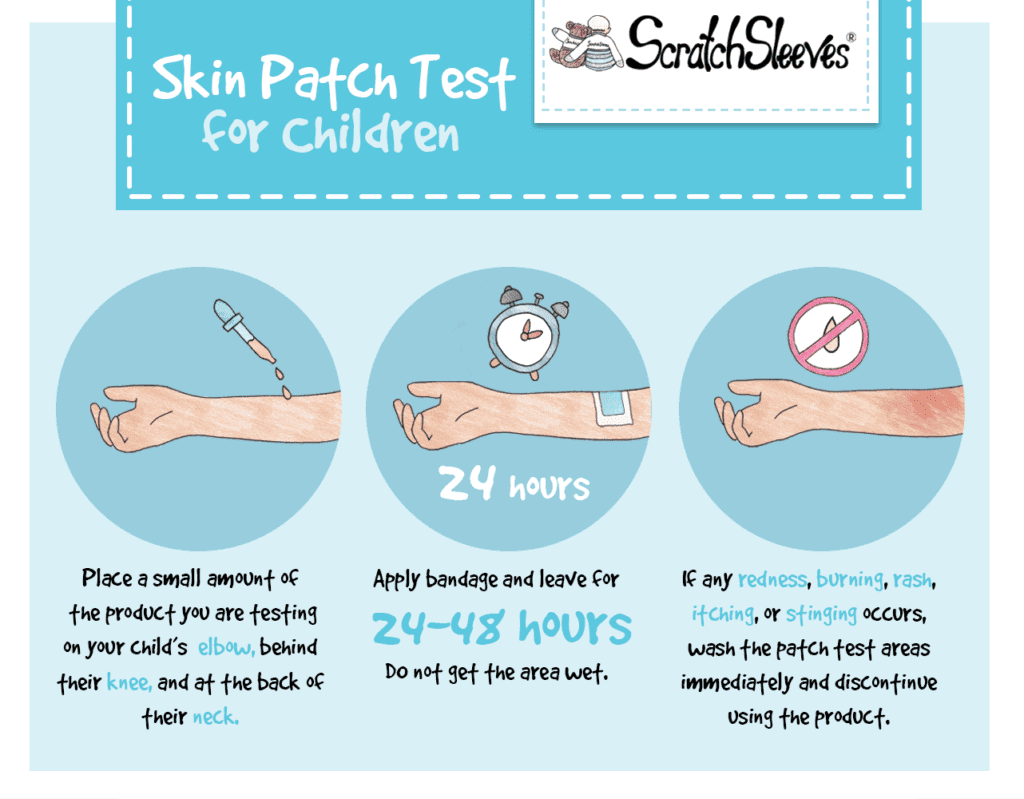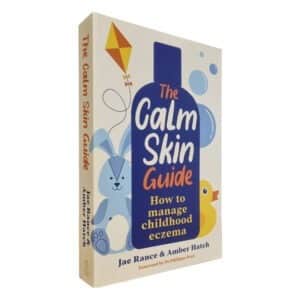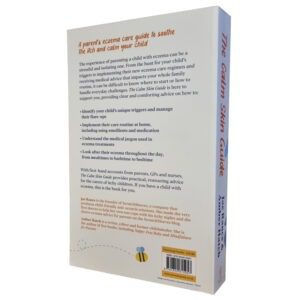How to patch test toiletries and creams on children with eczema






When your baby has eczema, it can be an exhausting and frustrating task to find products that don’t irritate their sensitive skin. Since every baby will react differently to certain ingredients, there is no one-size-fits-all when it comes to toiletries. It’s all about testing products to see what works best for your child. We show you how to test new products to minimise the risk of an eczema flare-up.
Of course, you want to identify the best products quickly to avoid big flare-ups (and wasted money) where you can. So, to help you on your hunt, we’ve created this list of ingredients to avoid in your baby’s skincare products.
When you do find a new product, whether natural or synthetic, one great habit to get into is to conduct a patch test before use. This will help you to avoid exacerbating your baby’s eczema.
What is a patch test?
Patch testing is a method of testing toiletries to determine whether they will cause eczema before extended use. A home patch test is not the same as an allergy test. It is however a great way to identify products to minimise eczema flare-ups. (Most women will be familiar with patch testing before having their hair coloured. Patch testing eczema treatments works in the same way).
If your little one is repeatedly reacting to skincare products, your doctor can analyse the severity of their reaction and identify its cause with an application test. This test detects type IV hypersensitivity reactions (allergic contact dermatitis reactions) to substances including fragrances, parabens, and preservatives in toiletries. An application test is recommended in cases where the trigger isn’t apparent, or symptoms develop several days after applying the trigger product.

Which toiletries should you patch test?
We recommend testing everything that you plan to use on your baby’s skin. This includes creams, sunscreen, shampoo and conditioner, bubble bath, toothpaste. Here’s how to do it:
- To begin, test only one product at a time as testing multiple products at once can make it difficult to determine which toiletries are causing the reaction.
- Give your baby a calming bath to clean the skin and remove any leftover products and dry them thoroughly.
- Place a penny-sized amount of the test product inside their elbow, behind their knee, and at the back of their neck. Try to conduct the patch test 12-24 hours before bathtime to give the product time to sink into the skin.
Top tip: Only conduct the patch test on one side of the body, using the other side as a control. This will help you determine whether, if a reaction occurs, it is to the test product or an unrelated trigger.
- If any redness, burning, rash, itching, or stinging occurs, wash the patch test areas immediately and discontinue using the product.
- If no reaction occurs, wait two days, and then repeat the steps above. Apply the product to the same three areas.
- If there is still no reaction, wait two more days and conduct a third patch test.
- If your child begins to react to the product at any time, wash the area immediately and discontinue use.
- Following the third patch test, if no reaction has occurred, conduct a patch test in the same three areas every day for a week. This allows time for any contact dermatitis to build through periods of continued exposure.
- If, after a week of use, no reaction has occurred, the product should be safe to use on your child.
Why do I need to repeat the testing so much?
Conducting a repeated patch test is vital since some reactions won’t occur immediately after initial exposure. This is because there are two types of contact dermatitis that can present differently.
Irritant contact dermatitis
Various ingredients can trigger this form of dermatitis which presents an immediate, localised reaction in the contact area. Typically, triggers of irritant contact dermatitis may affect anyone exposed to the irritant, though eczema sufferers can be particularly sensitive. The reaction won’t worsen with repeated exposure to the irritant and will begin to fade once the irritant is removed.
Allergic contact dermatitis
If your child is allergic to a particular ingredient within the test product, this can cause an allergic contact dermatitis response. These reactions may take 48-72 hours to develop. This is because they involve the body recognising the allergen on the skin’s surface, activating the immune system, and triggering dermatitis. Unlike irritants, only a small number of people will react to the specific allergen. With allergic reactions, the more the skin is exposed to a substance, the worse the allergic reaction can become.
Remember: Just because your baby hasn’t reacted to a product now, this doesn’t mean a reaction won’t develop in the future. So, always keep an eye out for new flare-ups that may be caused by toiletries.
Here at ScratchSleeves, we don’t just share our experiences of bringing up an eczema child and favourite allergy-friendly recipes, we also manufacture and sell our unique stay-on scratch mitts and PJs for itchy babies, toddlers and children. We now stock sizes from 0-adult years in a range of colours. Visit our webshop for more information.
The Calm Skin Guide
Love our blog? It's also available in book format with:
- First hand accounts from parents & medical professionals
- Easy navigation
- Comprehensive index
- Additional material
Signed copies available at no extra cost
-
The Calm Skin Guide
£14.99 This product has multiple variants. The options may be chosen on the product page
Written by:
Reviewed by:
Interesting article? Don't keep it to yourself...
Read next...
You may also find helpful...
Quick buy




Multi Buy Discount


Spend between £30 - £60 and save 5%
Spend between £60 - £120 and save 10%
Spend over £120 and save 15%
Discount automatically applied at checkout
No Quibbles Guarantee


ScratchSleeves abide by a no quibbles guarantee.
Free UK Postage


Free packing and postage on all UK orders. For overseas orders to Europe postage is from £3.50, to USA is £8.50 and to the rest of the world, from £6.50.







